For those that have limited time, a storyboard  https://abs.twimg.com/emoji/v2/... draggable="false" alt="⛰" title="Berg" aria-label="Emoji: Berg">
https://abs.twimg.com/emoji/v2/... draggable="false" alt="⛰" title="Berg" aria-label="Emoji: Berg"> https://abs.twimg.com/emoji/v2/... draggable="false" alt="📖" title="Offenes Buch" aria-label="Emoji: Offenes Buch">
https://abs.twimg.com/emoji/v2/... draggable="false" alt="📖" title="Offenes Buch" aria-label="Emoji: Offenes Buch"> https://abs.twimg.com/emoji/v2/... draggable="false" alt="👀" title="Augen" aria-label="Emoji: Augen"> of our
https://abs.twimg.com/emoji/v2/... draggable="false" alt="👀" title="Augen" aria-label="Emoji: Augen"> of our  https://abs.twimg.com/emoji/v2/... draggable="false" alt="💥" title="Symbol für eine Kollision" aria-label="Emoji: Symbol für eine Kollision">NEW PAPER
https://abs.twimg.com/emoji/v2/... draggable="false" alt="💥" title="Symbol für eine Kollision" aria-label="Emoji: Symbol für eine Kollision">NEW PAPER https://abs.twimg.com/emoji/v2/... draggable="false" alt="💥" title="Symbol für eine Kollision" aria-label="Emoji: Symbol für eine Kollision">in Basin Research below..
https://abs.twimg.com/emoji/v2/... draggable="false" alt="💥" title="Symbol für eine Kollision" aria-label="Emoji: Symbol für eine Kollision">in Basin Research below..  https://abs.twimg.com/emoji/v2/... draggable="false" alt="⬇️" title="Pfeil nach unten" aria-label="Emoji: Pfeil nach unten">
https://abs.twimg.com/emoji/v2/... draggable="false" alt="⬇️" title="Pfeil nach unten" aria-label="Emoji: Pfeil nach unten"> https://abs.twimg.com/emoji/v2/... draggable="false" alt="⛏" title="Spitzhacke" aria-label="Emoji: Spitzhacke">
https://abs.twimg.com/emoji/v2/... draggable="false" alt="⛏" title="Spitzhacke" aria-label="Emoji: Spitzhacke"> https://abs.twimg.com/emoji/v2/... draggable="false" alt="📈" title="Tabelle mit Aufwärtstrend" aria-label="Emoji: Tabelle mit Aufwärtstrend">
https://abs.twimg.com/emoji/v2/... draggable="false" alt="📈" title="Tabelle mit Aufwärtstrend" aria-label="Emoji: Tabelle mit Aufwärtstrend"> https://abs.twimg.com/emoji/v2/... draggable="false" alt="🔍" title="Nach links zeigende Lupe" aria-label="Emoji: Nach links zeigende Lupe">
https://abs.twimg.com/emoji/v2/... draggable="false" alt="🔍" title="Nach links zeigende Lupe" aria-label="Emoji: Nach links zeigende Lupe"> https://abs.twimg.com/emoji/v2/... draggable="false" alt="😯" title="Schweigendes Gesicht" aria-label="Emoji: Schweigendes Gesicht">
https://abs.twimg.com/emoji/v2/... draggable="false" alt="😯" title="Schweigendes Gesicht" aria-label="Emoji: Schweigendes Gesicht">
@stratleeds @seis_matters @BasinResearch https://onlinelibrary.wiley.com/doi/abs/10.1111/bre.12508">https://onlinelibrary.wiley.com/doi/abs/1...
@stratleeds @seis_matters @BasinResearch https://onlinelibrary.wiley.com/doi/abs/10.1111/bre.12508">https://onlinelibrary.wiley.com/doi/abs/1...
Syn-rift basin records are complex, but important for understanding sediment routing from source-to-sink  https://abs.twimg.com/emoji/v2/... draggable="false" alt="⛰" title="Berg" aria-label="Emoji: Berg">
https://abs.twimg.com/emoji/v2/... draggable="false" alt="⛰" title="Berg" aria-label="Emoji: Berg"> https://abs.twimg.com/emoji/v2/... draggable="false" alt="🌊" title="Wasserwelle" aria-label="Emoji: Wasserwelle">, resource distribution
https://abs.twimg.com/emoji/v2/... draggable="false" alt="🌊" title="Wasserwelle" aria-label="Emoji: Wasserwelle">, resource distribution  https://abs.twimg.com/emoji/v2/... draggable="false" alt="🩸" title="Tropfen Blut" aria-label="Emoji: Tropfen Blut">
https://abs.twimg.com/emoji/v2/... draggable="false" alt="🩸" title="Tropfen Blut" aria-label="Emoji: Tropfen Blut"> https://abs.twimg.com/emoji/v2/... draggable="false" alt="💰" title="Geldsack" aria-label="Emoji: Geldsack">and the controls that shape our landscapes
https://abs.twimg.com/emoji/v2/... draggable="false" alt="💰" title="Geldsack" aria-label="Emoji: Geldsack">and the controls that shape our landscapes  https://abs.twimg.com/emoji/v2/... draggable="false" alt="⚡️" title="Hochspannungszeichen" aria-label="Emoji: Hochspannungszeichen">
https://abs.twimg.com/emoji/v2/... draggable="false" alt="⚡️" title="Hochspannungszeichen" aria-label="Emoji: Hochspannungszeichen"> https://abs.twimg.com/emoji/v2/... draggable="false" alt="🌍" title="Europa-Afrika auf dem Globus" aria-label="Emoji: Europa-Afrika auf dem Globus">
https://abs.twimg.com/emoji/v2/... draggable="false" alt="🌍" title="Europa-Afrika auf dem Globus" aria-label="Emoji: Europa-Afrika auf dem Globus">
Multiple depositional systems from different origins develop and interact through time in hangingwall basins  https://abs.twimg.com/emoji/v2/... draggable="false" alt="🧐" title="Gesicht mit Monokel" aria-label="Emoji: Gesicht mit Monokel"> The resultant architecture is difficult to predict and preservation of net-erosional landscapes is limited
https://abs.twimg.com/emoji/v2/... draggable="false" alt="🧐" title="Gesicht mit Monokel" aria-label="Emoji: Gesicht mit Monokel"> The resultant architecture is difficult to predict and preservation of net-erosional landscapes is limited  https://abs.twimg.com/emoji/v2/... draggable="false" alt="😰" title="Gesicht mit offenem Mund und Angstschweiß" aria-label="Emoji: Gesicht mit offenem Mund und Angstschweiß">
https://abs.twimg.com/emoji/v2/... draggable="false" alt="😰" title="Gesicht mit offenem Mund und Angstschweiß" aria-label="Emoji: Gesicht mit offenem Mund und Angstschweiß">
We study an individual, subsurface fault block (Thebe-2) on the Exmouth Plateau, NW Shelf, Australia  https://abs.twimg.com/emoji/v2/... draggable="false" alt="🇦🇺" title="Flagge von Australien" aria-label="Emoji: Flagge von Australien"> We use beautiful, open-access 3D seismic data
https://abs.twimg.com/emoji/v2/... draggable="false" alt="🇦🇺" title="Flagge von Australien" aria-label="Emoji: Flagge von Australien"> We use beautiful, open-access 3D seismic data  https://abs.twimg.com/emoji/v2/... draggable="false" alt="😍" title="Lächelndes Gesicht mit herzförmigen Augen" aria-label="Emoji: Lächelndes Gesicht mit herzförmigen Augen"> from Geoscience Australia and local exploration wells.
https://abs.twimg.com/emoji/v2/... draggable="false" alt="😍" title="Lächelndes Gesicht mit herzförmigen Augen" aria-label="Emoji: Lächelndes Gesicht mit herzförmigen Augen"> from Geoscience Australia and local exploration wells.
The subsurface landscape is spectacular  https://abs.twimg.com/emoji/v2/... draggable="false" alt="🤩" title="Vom Star geblendet" aria-label="Emoji: Vom Star geblendet">.. the seismic data reveal several degraded fault scarps..
https://abs.twimg.com/emoji/v2/... draggable="false" alt="🤩" title="Vom Star geblendet" aria-label="Emoji: Vom Star geblendet">.. the seismic data reveal several degraded fault scarps..  https://abs.twimg.com/emoji/v2/... draggable="false" alt="👀" title="Augen" aria-label="Emoji: Augen">
https://abs.twimg.com/emoji/v2/... draggable="false" alt="👀" title="Augen" aria-label="Emoji: Augen"> https://abs.twimg.com/emoji/v2/... draggable="false" alt="🤯" title="Explodierender Kopf" aria-label="Emoji: Explodierender Kopf">
https://abs.twimg.com/emoji/v2/... draggable="false" alt="🤯" title="Explodierender Kopf" aria-label="Emoji: Explodierender Kopf">
We undertake detailed seismic facies and stratigraphic analysis  https://abs.twimg.com/emoji/v2/... draggable="false" alt="😑" title="Ausdrucksloses Gesicht" aria-label="Emoji: Ausdrucksloses Gesicht"> and note the important distinction between planar-sloping fan geometries interpreted to be slope aprons and radial, distinct clinoforms interpreted to be fan deltas
https://abs.twimg.com/emoji/v2/... draggable="false" alt="😑" title="Ausdrucksloses Gesicht" aria-label="Emoji: Ausdrucksloses Gesicht"> and note the important distinction between planar-sloping fan geometries interpreted to be slope aprons and radial, distinct clinoforms interpreted to be fan deltas  https://abs.twimg.com/emoji/v2/... draggable="false" alt="👍" title="Thumbs up" aria-label="Emoji: Thumbs up">
https://abs.twimg.com/emoji/v2/... draggable="false" alt="👍" title="Thumbs up" aria-label="Emoji: Thumbs up">
Our stratigraphic framework reveals multiple depositional systems deriving from the footwall, hangingwall dip slope (and antithetic faults) and axially from the fault tip  https://abs.twimg.com/emoji/v2/... draggable="false" alt="🤭" title="Gesicht mit Hand über dem Mund" aria-label="Emoji: Gesicht mit Hand über dem Mund">
https://abs.twimg.com/emoji/v2/... draggable="false" alt="🤭" title="Gesicht mit Hand über dem Mund" aria-label="Emoji: Gesicht mit Hand über dem Mund"> https://abs.twimg.com/emoji/v2/... draggable="false" alt="😯" title="Schweigendes Gesicht" aria-label="Emoji: Schweigendes Gesicht">
https://abs.twimg.com/emoji/v2/... draggable="false" alt="😯" title="Schweigendes Gesicht" aria-label="Emoji: Schweigendes Gesicht">
Depositional systems interact in a range of ways: diverting, building around eachother, onlapping and interfingering  https://abs.twimg.com/emoji/v2/... draggable="false" alt="🤝" title="Handschlag" aria-label="Emoji: Handschlag">
https://abs.twimg.com/emoji/v2/... draggable="false" alt="🤝" title="Handschlag" aria-label="Emoji: Handschlag"> https://abs.twimg.com/emoji/v2/... draggable="false" alt="👊" title="Fisted hand" aria-label="Emoji: Fisted hand">
https://abs.twimg.com/emoji/v2/... draggable="false" alt="👊" title="Fisted hand" aria-label="Emoji: Fisted hand"> https://abs.twimg.com/emoji/v2/... draggable="false" alt="👉" title="Rückhand Zeigefinger nach rechts" aria-label="Emoji: Rückhand Zeigefinger nach rechts">- representing a range of compensational stacking styles, hardly documented in conceptual tectono-sedimentary models
https://abs.twimg.com/emoji/v2/... draggable="false" alt="👉" title="Rückhand Zeigefinger nach rechts" aria-label="Emoji: Rückhand Zeigefinger nach rechts">- representing a range of compensational stacking styles, hardly documented in conceptual tectono-sedimentary models
Footwall-derived systems in the immediate hangingwall show amazing variability along-strike  https://abs.twimg.com/emoji/v2/... draggable="false" alt="🏡" title="Haus mit Garten" aria-label="Emoji: Haus mit Garten">
https://abs.twimg.com/emoji/v2/... draggable="false" alt="🏡" title="Haus mit Garten" aria-label="Emoji: Haus mit Garten"> https://abs.twimg.com/emoji/v2/... draggable="false" alt="🏰" title="Europäisches Schloss" aria-label="Emoji: Europäisches Schloss">
https://abs.twimg.com/emoji/v2/... draggable="false" alt="🏰" title="Europäisches Schloss" aria-label="Emoji: Europäisches Schloss"> https://abs.twimg.com/emoji/v2/... draggable="false" alt="⛺️" title="Zelt" aria-label="Emoji: Zelt">, demonstrating the delicate balance between accommodation and sediment supply across short length-scales
https://abs.twimg.com/emoji/v2/... draggable="false" alt="⛺️" title="Zelt" aria-label="Emoji: Zelt">, demonstrating the delicate balance between accommodation and sediment supply across short length-scales
We calculate volume of footwall erosion and volume of the *footwall-derived* hangingwall fans. Balancing volumes  https://abs.twimg.com/emoji/v2/... draggable="false" alt="⚖️" title="Waage" aria-label="Emoji: Waage"> : Excess fw erosion = sediment bypass; excess hw fill = sediment input from beyond the fault crest. (See carefully considered assumptions in the paper!)
https://abs.twimg.com/emoji/v2/... draggable="false" alt="⚖️" title="Waage" aria-label="Emoji: Waage"> : Excess fw erosion = sediment bypass; excess hw fill = sediment input from beyond the fault crest. (See carefully considered assumptions in the paper!)
Did I mention we work with time data?  https://abs.twimg.com/emoji/v2/... draggable="false" alt="⏱" title="Stoppuhr" aria-label="Emoji: Stoppuhr"> Our paper goes through this approach in detail, so it can be used in other basins with time or depth-converted seismic data
https://abs.twimg.com/emoji/v2/... draggable="false" alt="⏱" title="Stoppuhr" aria-label="Emoji: Stoppuhr"> Our paper goes through this approach in detail, so it can be used in other basins with time or depth-converted seismic data  https://abs.twimg.com/emoji/v2/... draggable="false" alt="😊" title="Lächelndes Gesicht mit lächelnden Augen" aria-label="Emoji: Lächelndes Gesicht mit lächelnden Augen">
https://abs.twimg.com/emoji/v2/... draggable="false" alt="😊" title="Lächelndes Gesicht mit lächelnden Augen" aria-label="Emoji: Lächelndes Gesicht mit lächelnden Augen">
We make a quantitatively-informed interpretation of the tectono-sedimentary evolution of the basin  https://abs.twimg.com/emoji/v2/... draggable="false" alt="🤓" title="Nerd-Gesicht" aria-label="Emoji: Nerd-Gesicht">
https://abs.twimg.com/emoji/v2/... draggable="false" alt="🤓" title="Nerd-Gesicht" aria-label="Emoji: Nerd-Gesicht"> https://abs.twimg.com/emoji/v2/... draggable="false" alt="📸" title="Kamera mit Blitz" aria-label="Emoji: Kamera mit Blitz">
https://abs.twimg.com/emoji/v2/... draggable="false" alt="📸" title="Kamera mit Blitz" aria-label="Emoji: Kamera mit Blitz">
Our work supports subaerial exposure of the fault block and adjacent fault terraces producing small catchments that fed deposition in narrow rift valleys and palaeo-shorelines that fringed emergent fault blocks  https://abs.twimg.com/emoji/v2/... draggable="false" alt="⛰" title="Berg" aria-label="Emoji: Berg">
https://abs.twimg.com/emoji/v2/... draggable="false" alt="⛰" title="Berg" aria-label="Emoji: Berg"> https://abs.twimg.com/emoji/v2/... draggable="false" alt="🏖" title="Strand mit Sonnenschirm" aria-label="Emoji: Strand mit Sonnenschirm">
https://abs.twimg.com/emoji/v2/... draggable="false" alt="🏖" title="Strand mit Sonnenschirm" aria-label="Emoji: Strand mit Sonnenschirm"> https://abs.twimg.com/emoji/v2/... draggable="false" alt="👀" title="Augen" aria-label="Emoji: Augen">
https://abs.twimg.com/emoji/v2/... draggable="false" alt="👀" title="Augen" aria-label="Emoji: Augen">
Could such hangingwall fans form prospective reservoirs, analogous to the Brae Play, N Sea?  https://abs.twimg.com/emoji/v2/... draggable="false" alt="🤔" title="Denkendes Gesicht" aria-label="Emoji: Denkendes Gesicht">
https://abs.twimg.com/emoji/v2/... draggable="false" alt="🤔" title="Denkendes Gesicht" aria-label="Emoji: Denkendes Gesicht"> https://abs.twimg.com/emoji/v2/... draggable="false" alt="🩸" title="Tropfen Blut" aria-label="Emoji: Tropfen Blut">
https://abs.twimg.com/emoji/v2/... draggable="false" alt="🩸" title="Tropfen Blut" aria-label="Emoji: Tropfen Blut">
Volume balancing picks out the through-going sediment input points in the absence of catchment imaging.  https://abs.twimg.com/emoji/v2/... draggable="false" alt="👌" title="Ok hand" aria-label="Emoji: Ok hand">Could these be the conduits to the cleanest, reservoir-quality sands in the basin?
https://abs.twimg.com/emoji/v2/... draggable="false" alt="👌" title="Ok hand" aria-label="Emoji: Ok hand">Could these be the conduits to the cleanest, reservoir-quality sands in the basin?  https://abs.twimg.com/emoji/v2/... draggable="false" alt="💸" title="Geld mit Flügeln" aria-label="Emoji: Geld mit Flügeln">
https://abs.twimg.com/emoji/v2/... draggable="false" alt="💸" title="Geld mit Flügeln" aria-label="Emoji: Geld mit Flügeln">
Takeaway 1: Let’s incorporate the interactions between multiple depositional systems in fault-confined basins that this and other recent studies highlight  https://abs.twimg.com/emoji/v2/... draggable="false" alt="🤗" title="Umarmendes Gesicht" aria-label="Emoji: Umarmendes Gesicht">
https://abs.twimg.com/emoji/v2/... draggable="false" alt="🤗" title="Umarmendes Gesicht" aria-label="Emoji: Umarmendes Gesicht">
Takeaway 2: The independent volume balancing approach could be applied to other rift basin-fills to identify through-going sediment input points and maybe also areas of sediment bypass  https://abs.twimg.com/emoji/v2/... draggable="false" alt="🥳" title="Partying face" aria-label="Emoji: Partying face">
https://abs.twimg.com/emoji/v2/... draggable="false" alt="🥳" title="Partying face" aria-label="Emoji: Partying face">

 Read on Twitter
Read on Twitter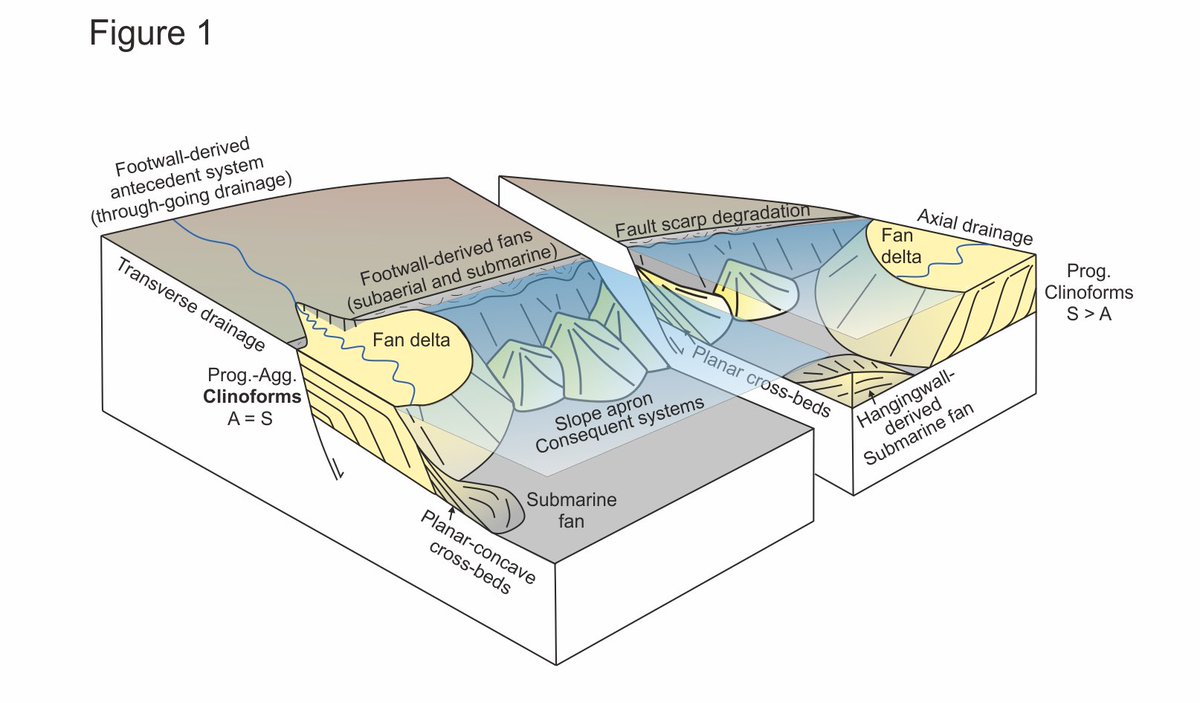 The resultant architecture is difficult to predict and preservation of net-erosional landscapes is limited https://abs.twimg.com/emoji/v2/... draggable="false" alt="😰" title="Gesicht mit offenem Mund und Angstschweiß" aria-label="Emoji: Gesicht mit offenem Mund und Angstschweiß">" title="Multiple depositional systems from different origins develop and interact through time in hangingwall basins https://abs.twimg.com/emoji/v2/... draggable="false" alt="🧐" title="Gesicht mit Monokel" aria-label="Emoji: Gesicht mit Monokel"> The resultant architecture is difficult to predict and preservation of net-erosional landscapes is limited https://abs.twimg.com/emoji/v2/... draggable="false" alt="😰" title="Gesicht mit offenem Mund und Angstschweiß" aria-label="Emoji: Gesicht mit offenem Mund und Angstschweiß">" class="img-responsive" style="max-width:100%;"/>
The resultant architecture is difficult to predict and preservation of net-erosional landscapes is limited https://abs.twimg.com/emoji/v2/... draggable="false" alt="😰" title="Gesicht mit offenem Mund und Angstschweiß" aria-label="Emoji: Gesicht mit offenem Mund und Angstschweiß">" title="Multiple depositional systems from different origins develop and interact through time in hangingwall basins https://abs.twimg.com/emoji/v2/... draggable="false" alt="🧐" title="Gesicht mit Monokel" aria-label="Emoji: Gesicht mit Monokel"> The resultant architecture is difficult to predict and preservation of net-erosional landscapes is limited https://abs.twimg.com/emoji/v2/... draggable="false" alt="😰" title="Gesicht mit offenem Mund und Angstschweiß" aria-label="Emoji: Gesicht mit offenem Mund und Angstschweiß">" class="img-responsive" style="max-width:100%;"/>
 .. the seismic data reveal several degraded fault scarps.. https://abs.twimg.com/emoji/v2/... draggable="false" alt="👀" title="Augen" aria-label="Emoji: Augen">https://abs.twimg.com/emoji/v2/... draggable="false" alt="🤯" title="Explodierender Kopf" aria-label="Emoji: Explodierender Kopf">" title="The subsurface landscape is spectacular https://abs.twimg.com/emoji/v2/... draggable="false" alt="🤩" title="Vom Star geblendet" aria-label="Emoji: Vom Star geblendet">.. the seismic data reveal several degraded fault scarps.. https://abs.twimg.com/emoji/v2/... draggable="false" alt="👀" title="Augen" aria-label="Emoji: Augen">https://abs.twimg.com/emoji/v2/... draggable="false" alt="🤯" title="Explodierender Kopf" aria-label="Emoji: Explodierender Kopf">">
.. the seismic data reveal several degraded fault scarps.. https://abs.twimg.com/emoji/v2/... draggable="false" alt="👀" title="Augen" aria-label="Emoji: Augen">https://abs.twimg.com/emoji/v2/... draggable="false" alt="🤯" title="Explodierender Kopf" aria-label="Emoji: Explodierender Kopf">" title="The subsurface landscape is spectacular https://abs.twimg.com/emoji/v2/... draggable="false" alt="🤩" title="Vom Star geblendet" aria-label="Emoji: Vom Star geblendet">.. the seismic data reveal several degraded fault scarps.. https://abs.twimg.com/emoji/v2/... draggable="false" alt="👀" title="Augen" aria-label="Emoji: Augen">https://abs.twimg.com/emoji/v2/... draggable="false" alt="🤯" title="Explodierender Kopf" aria-label="Emoji: Explodierender Kopf">">
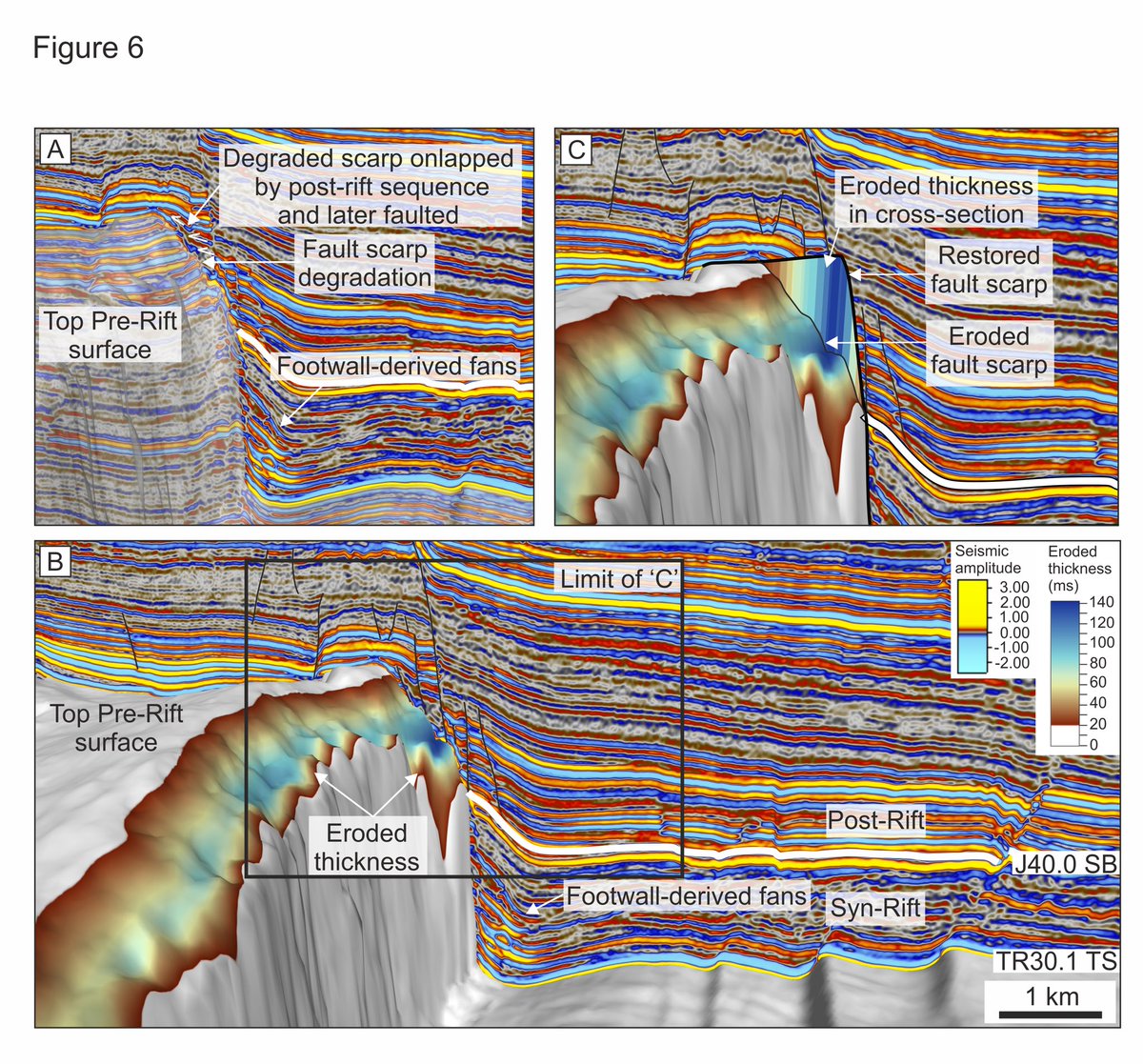 .. the seismic data reveal several degraded fault scarps.. https://abs.twimg.com/emoji/v2/... draggable="false" alt="👀" title="Augen" aria-label="Emoji: Augen">https://abs.twimg.com/emoji/v2/... draggable="false" alt="🤯" title="Explodierender Kopf" aria-label="Emoji: Explodierender Kopf">" title="The subsurface landscape is spectacular https://abs.twimg.com/emoji/v2/... draggable="false" alt="🤩" title="Vom Star geblendet" aria-label="Emoji: Vom Star geblendet">.. the seismic data reveal several degraded fault scarps.. https://abs.twimg.com/emoji/v2/... draggable="false" alt="👀" title="Augen" aria-label="Emoji: Augen">https://abs.twimg.com/emoji/v2/... draggable="false" alt="🤯" title="Explodierender Kopf" aria-label="Emoji: Explodierender Kopf">">
.. the seismic data reveal several degraded fault scarps.. https://abs.twimg.com/emoji/v2/... draggable="false" alt="👀" title="Augen" aria-label="Emoji: Augen">https://abs.twimg.com/emoji/v2/... draggable="false" alt="🤯" title="Explodierender Kopf" aria-label="Emoji: Explodierender Kopf">" title="The subsurface landscape is spectacular https://abs.twimg.com/emoji/v2/... draggable="false" alt="🤩" title="Vom Star geblendet" aria-label="Emoji: Vom Star geblendet">.. the seismic data reveal several degraded fault scarps.. https://abs.twimg.com/emoji/v2/... draggable="false" alt="👀" title="Augen" aria-label="Emoji: Augen">https://abs.twimg.com/emoji/v2/... draggable="false" alt="🤯" title="Explodierender Kopf" aria-label="Emoji: Explodierender Kopf">">
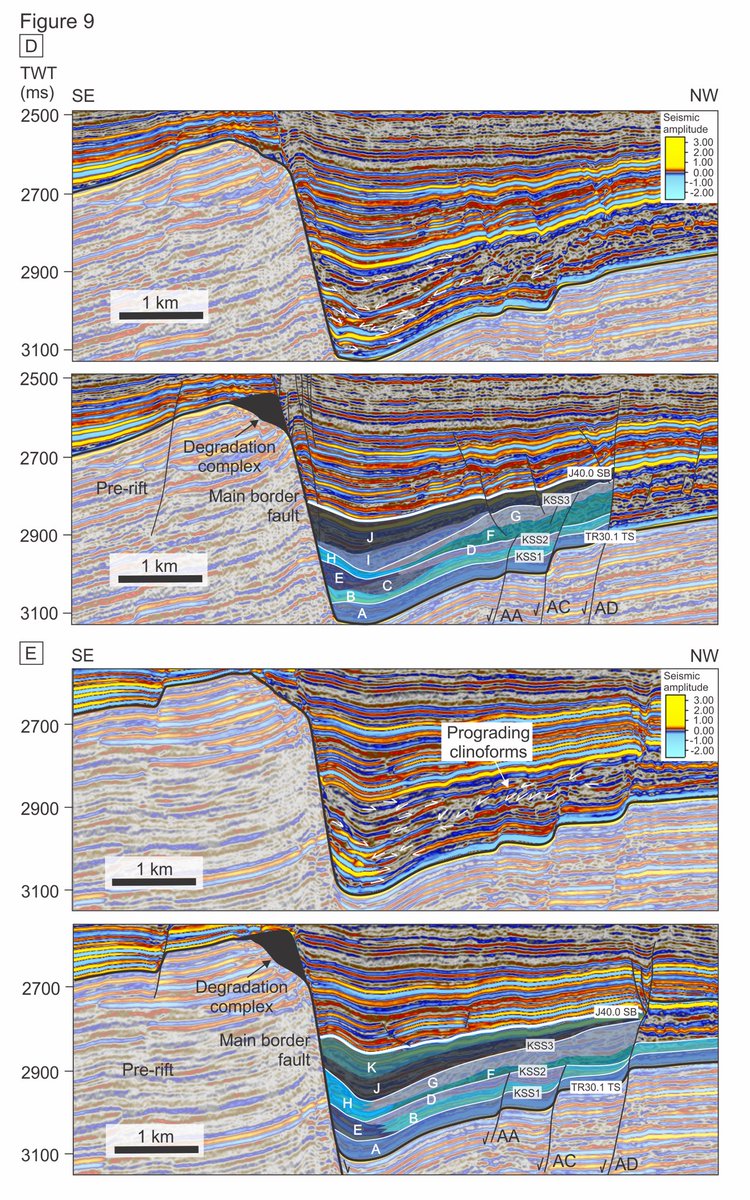 https://abs.twimg.com/emoji/v2/... draggable="false" alt="😯" title="Schweigendes Gesicht" aria-label="Emoji: Schweigendes Gesicht">" title="Our stratigraphic framework reveals multiple depositional systems deriving from the footwall, hangingwall dip slope (and antithetic faults) and axially from the fault tip https://abs.twimg.com/emoji/v2/... draggable="false" alt="🤭" title="Gesicht mit Hand über dem Mund" aria-label="Emoji: Gesicht mit Hand über dem Mund">https://abs.twimg.com/emoji/v2/... draggable="false" alt="😯" title="Schweigendes Gesicht" aria-label="Emoji: Schweigendes Gesicht">" class="img-responsive" style="max-width:100%;"/>
https://abs.twimg.com/emoji/v2/... draggable="false" alt="😯" title="Schweigendes Gesicht" aria-label="Emoji: Schweigendes Gesicht">" title="Our stratigraphic framework reveals multiple depositional systems deriving from the footwall, hangingwall dip slope (and antithetic faults) and axially from the fault tip https://abs.twimg.com/emoji/v2/... draggable="false" alt="🤭" title="Gesicht mit Hand über dem Mund" aria-label="Emoji: Gesicht mit Hand über dem Mund">https://abs.twimg.com/emoji/v2/... draggable="false" alt="😯" title="Schweigendes Gesicht" aria-label="Emoji: Schweigendes Gesicht">" class="img-responsive" style="max-width:100%;"/>
 https://abs.twimg.com/emoji/v2/... draggable="false" alt="👊" title="Fisted hand" aria-label="Emoji: Fisted hand">https://abs.twimg.com/emoji/v2/... draggable="false" alt="👉" title="Rückhand Zeigefinger nach rechts" aria-label="Emoji: Rückhand Zeigefinger nach rechts">- representing a range of compensational stacking styles, hardly documented in conceptual tectono-sedimentary models" title="Depositional systems interact in a range of ways: diverting, building around eachother, onlapping and interfingering https://abs.twimg.com/emoji/v2/... draggable="false" alt="🤝" title="Handschlag" aria-label="Emoji: Handschlag">https://abs.twimg.com/emoji/v2/... draggable="false" alt="👊" title="Fisted hand" aria-label="Emoji: Fisted hand">https://abs.twimg.com/emoji/v2/... draggable="false" alt="👉" title="Rückhand Zeigefinger nach rechts" aria-label="Emoji: Rückhand Zeigefinger nach rechts">- representing a range of compensational stacking styles, hardly documented in conceptual tectono-sedimentary models" class="img-responsive" style="max-width:100%;"/>
https://abs.twimg.com/emoji/v2/... draggable="false" alt="👊" title="Fisted hand" aria-label="Emoji: Fisted hand">https://abs.twimg.com/emoji/v2/... draggable="false" alt="👉" title="Rückhand Zeigefinger nach rechts" aria-label="Emoji: Rückhand Zeigefinger nach rechts">- representing a range of compensational stacking styles, hardly documented in conceptual tectono-sedimentary models" title="Depositional systems interact in a range of ways: diverting, building around eachother, onlapping and interfingering https://abs.twimg.com/emoji/v2/... draggable="false" alt="🤝" title="Handschlag" aria-label="Emoji: Handschlag">https://abs.twimg.com/emoji/v2/... draggable="false" alt="👊" title="Fisted hand" aria-label="Emoji: Fisted hand">https://abs.twimg.com/emoji/v2/... draggable="false" alt="👉" title="Rückhand Zeigefinger nach rechts" aria-label="Emoji: Rückhand Zeigefinger nach rechts">- representing a range of compensational stacking styles, hardly documented in conceptual tectono-sedimentary models" class="img-responsive" style="max-width:100%;"/>
 https://abs.twimg.com/emoji/v2/... draggable="false" alt="🏰" title="Europäisches Schloss" aria-label="Emoji: Europäisches Schloss">https://abs.twimg.com/emoji/v2/... draggable="false" alt="⛺️" title="Zelt" aria-label="Emoji: Zelt">, demonstrating the delicate balance between accommodation and sediment supply across short length-scales" title="Footwall-derived systems in the immediate hangingwall show amazing variability along-strike https://abs.twimg.com/emoji/v2/... draggable="false" alt="🏡" title="Haus mit Garten" aria-label="Emoji: Haus mit Garten">https://abs.twimg.com/emoji/v2/... draggable="false" alt="🏰" title="Europäisches Schloss" aria-label="Emoji: Europäisches Schloss">https://abs.twimg.com/emoji/v2/... draggable="false" alt="⛺️" title="Zelt" aria-label="Emoji: Zelt">, demonstrating the delicate balance between accommodation and sediment supply across short length-scales" class="img-responsive" style="max-width:100%;"/>
https://abs.twimg.com/emoji/v2/... draggable="false" alt="🏰" title="Europäisches Schloss" aria-label="Emoji: Europäisches Schloss">https://abs.twimg.com/emoji/v2/... draggable="false" alt="⛺️" title="Zelt" aria-label="Emoji: Zelt">, demonstrating the delicate balance between accommodation and sediment supply across short length-scales" title="Footwall-derived systems in the immediate hangingwall show amazing variability along-strike https://abs.twimg.com/emoji/v2/... draggable="false" alt="🏡" title="Haus mit Garten" aria-label="Emoji: Haus mit Garten">https://abs.twimg.com/emoji/v2/... draggable="false" alt="🏰" title="Europäisches Schloss" aria-label="Emoji: Europäisches Schloss">https://abs.twimg.com/emoji/v2/... draggable="false" alt="⛺️" title="Zelt" aria-label="Emoji: Zelt">, demonstrating the delicate balance between accommodation and sediment supply across short length-scales" class="img-responsive" style="max-width:100%;"/>
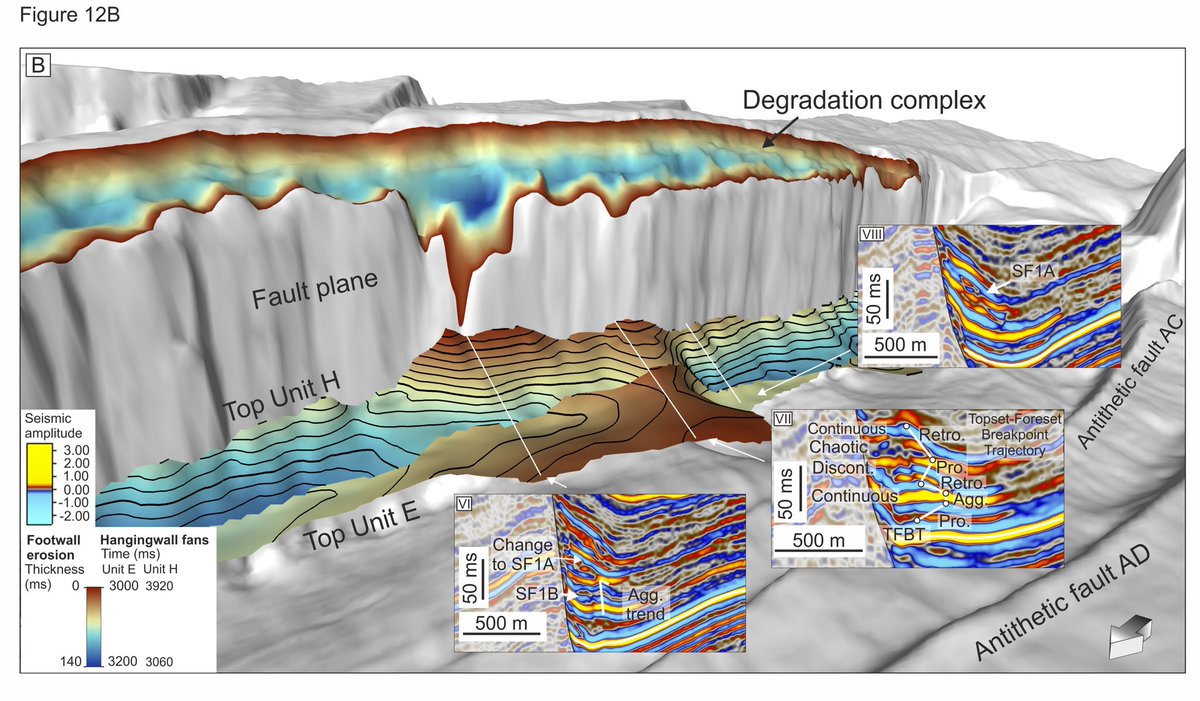 https://abs.twimg.com/emoji/v2/... draggable="false" alt="🏰" title="Europäisches Schloss" aria-label="Emoji: Europäisches Schloss">https://abs.twimg.com/emoji/v2/... draggable="false" alt="⛺️" title="Zelt" aria-label="Emoji: Zelt">, demonstrating the delicate balance between accommodation and sediment supply across short length-scales" title="Footwall-derived systems in the immediate hangingwall show amazing variability along-strike https://abs.twimg.com/emoji/v2/... draggable="false" alt="🏡" title="Haus mit Garten" aria-label="Emoji: Haus mit Garten">https://abs.twimg.com/emoji/v2/... draggable="false" alt="🏰" title="Europäisches Schloss" aria-label="Emoji: Europäisches Schloss">https://abs.twimg.com/emoji/v2/... draggable="false" alt="⛺️" title="Zelt" aria-label="Emoji: Zelt">, demonstrating the delicate balance between accommodation and sediment supply across short length-scales" class="img-responsive" style="max-width:100%;"/>
https://abs.twimg.com/emoji/v2/... draggable="false" alt="🏰" title="Europäisches Schloss" aria-label="Emoji: Europäisches Schloss">https://abs.twimg.com/emoji/v2/... draggable="false" alt="⛺️" title="Zelt" aria-label="Emoji: Zelt">, demonstrating the delicate balance between accommodation and sediment supply across short length-scales" title="Footwall-derived systems in the immediate hangingwall show amazing variability along-strike https://abs.twimg.com/emoji/v2/... draggable="false" alt="🏡" title="Haus mit Garten" aria-label="Emoji: Haus mit Garten">https://abs.twimg.com/emoji/v2/... draggable="false" alt="🏰" title="Europäisches Schloss" aria-label="Emoji: Europäisches Schloss">https://abs.twimg.com/emoji/v2/... draggable="false" alt="⛺️" title="Zelt" aria-label="Emoji: Zelt">, demonstrating the delicate balance between accommodation and sediment supply across short length-scales" class="img-responsive" style="max-width:100%;"/>
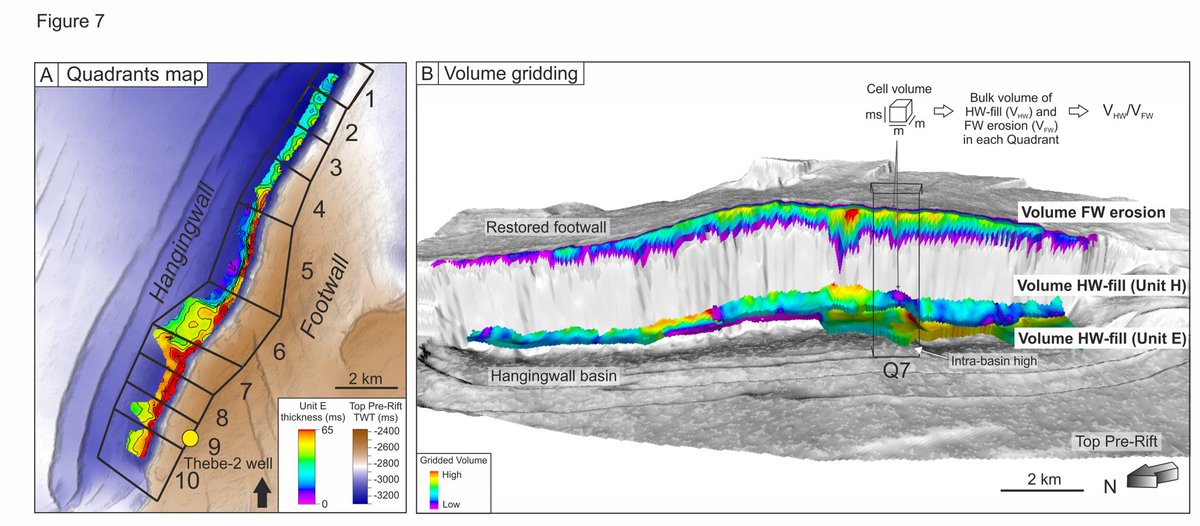 : Excess fw erosion = sediment bypass; excess hw fill = sediment input from beyond the fault crest. (See carefully considered assumptions in the paper!)" title="We calculate volume of footwall erosion and volume of the *footwall-derived* hangingwall fans. Balancing volumes https://abs.twimg.com/emoji/v2/... draggable="false" alt="⚖️" title="Waage" aria-label="Emoji: Waage"> : Excess fw erosion = sediment bypass; excess hw fill = sediment input from beyond the fault crest. (See carefully considered assumptions in the paper!)">
: Excess fw erosion = sediment bypass; excess hw fill = sediment input from beyond the fault crest. (See carefully considered assumptions in the paper!)" title="We calculate volume of footwall erosion and volume of the *footwall-derived* hangingwall fans. Balancing volumes https://abs.twimg.com/emoji/v2/... draggable="false" alt="⚖️" title="Waage" aria-label="Emoji: Waage"> : Excess fw erosion = sediment bypass; excess hw fill = sediment input from beyond the fault crest. (See carefully considered assumptions in the paper!)">
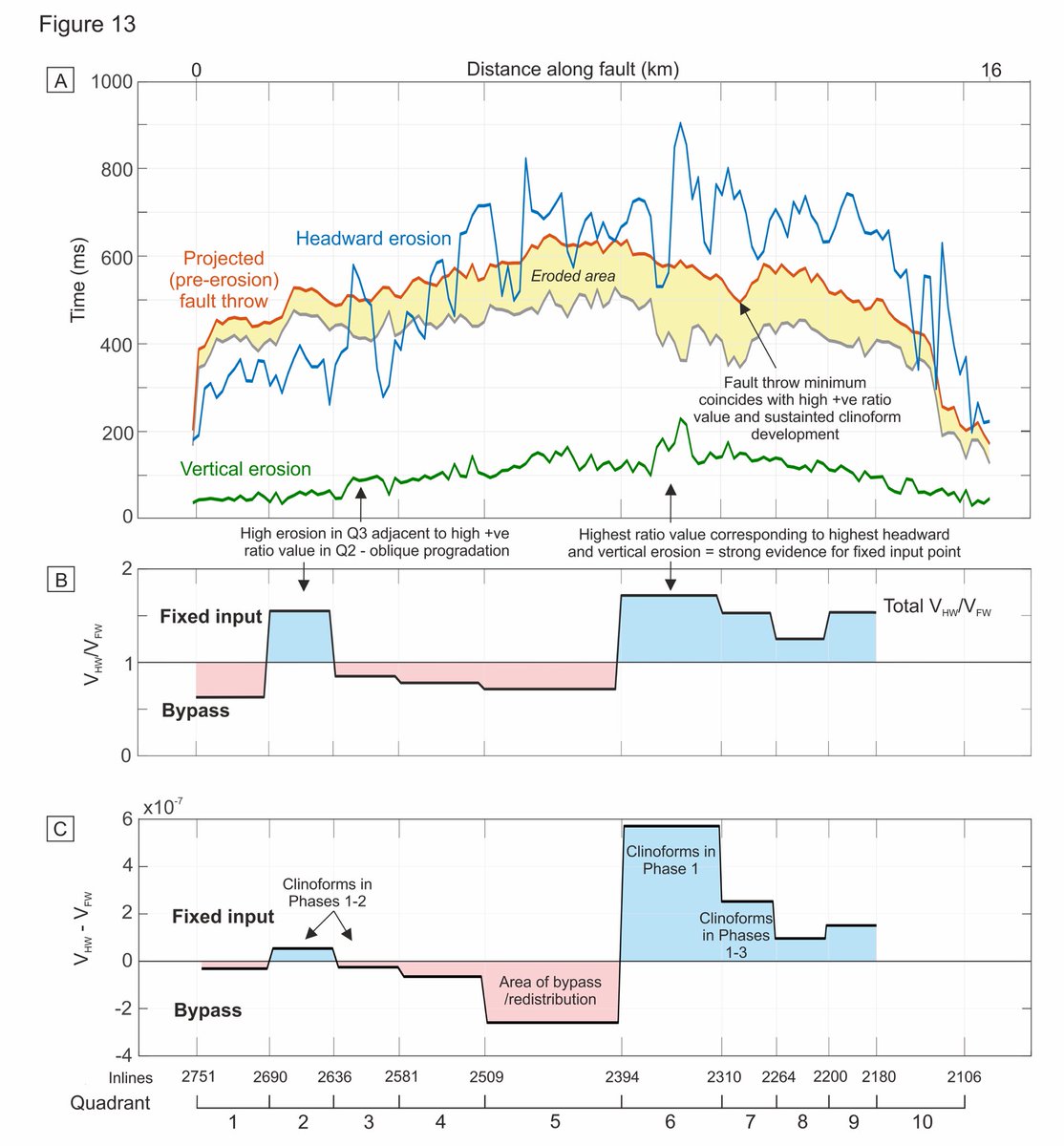 : Excess fw erosion = sediment bypass; excess hw fill = sediment input from beyond the fault crest. (See carefully considered assumptions in the paper!)" title="We calculate volume of footwall erosion and volume of the *footwall-derived* hangingwall fans. Balancing volumes https://abs.twimg.com/emoji/v2/... draggable="false" alt="⚖️" title="Waage" aria-label="Emoji: Waage"> : Excess fw erosion = sediment bypass; excess hw fill = sediment input from beyond the fault crest. (See carefully considered assumptions in the paper!)">
: Excess fw erosion = sediment bypass; excess hw fill = sediment input from beyond the fault crest. (See carefully considered assumptions in the paper!)" title="We calculate volume of footwall erosion and volume of the *footwall-derived* hangingwall fans. Balancing volumes https://abs.twimg.com/emoji/v2/... draggable="false" alt="⚖️" title="Waage" aria-label="Emoji: Waage"> : Excess fw erosion = sediment bypass; excess hw fill = sediment input from beyond the fault crest. (See carefully considered assumptions in the paper!)">
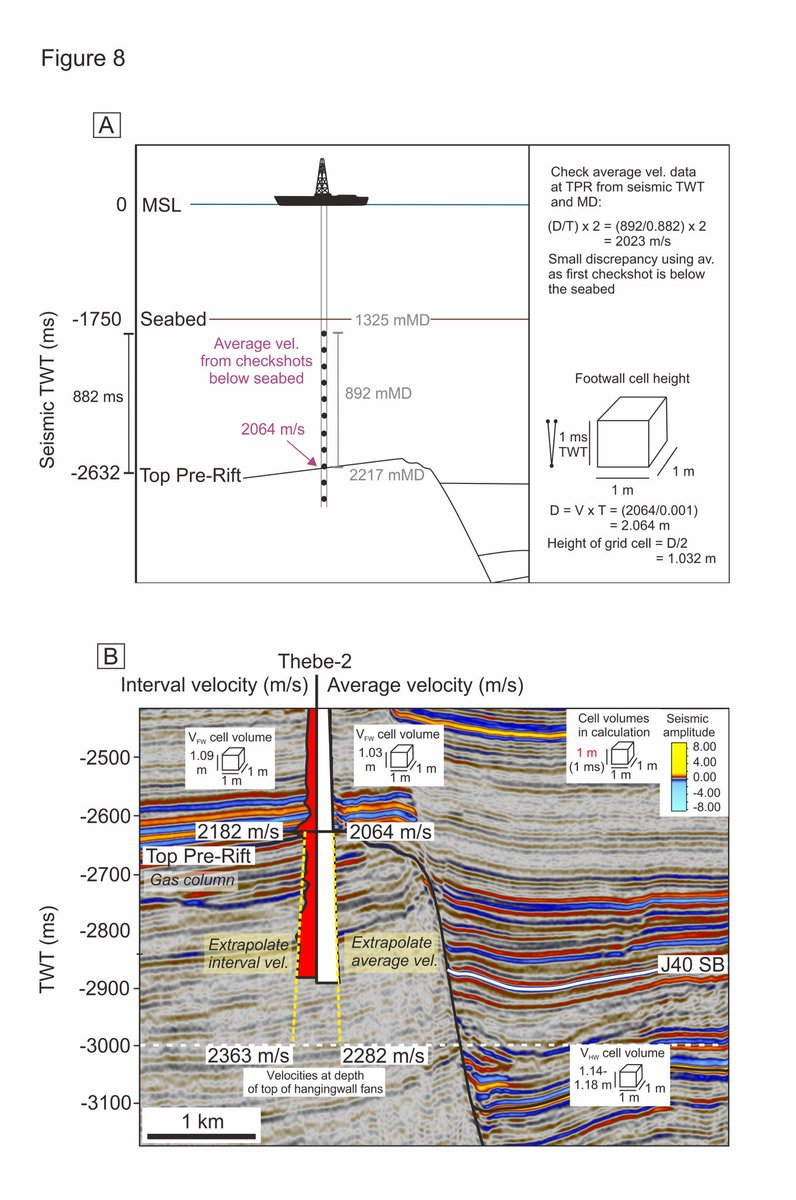 Our paper goes through this approach in detail, so it can be used in other basins with time or depth-converted seismic data https://abs.twimg.com/emoji/v2/... draggable="false" alt="😊" title="Lächelndes Gesicht mit lächelnden Augen" aria-label="Emoji: Lächelndes Gesicht mit lächelnden Augen">" title="Did I mention we work with time data? https://abs.twimg.com/emoji/v2/... draggable="false" alt="⏱" title="Stoppuhr" aria-label="Emoji: Stoppuhr"> Our paper goes through this approach in detail, so it can be used in other basins with time or depth-converted seismic data https://abs.twimg.com/emoji/v2/... draggable="false" alt="😊" title="Lächelndes Gesicht mit lächelnden Augen" aria-label="Emoji: Lächelndes Gesicht mit lächelnden Augen">" class="img-responsive" style="max-width:100%;"/>
Our paper goes through this approach in detail, so it can be used in other basins with time or depth-converted seismic data https://abs.twimg.com/emoji/v2/... draggable="false" alt="😊" title="Lächelndes Gesicht mit lächelnden Augen" aria-label="Emoji: Lächelndes Gesicht mit lächelnden Augen">" title="Did I mention we work with time data? https://abs.twimg.com/emoji/v2/... draggable="false" alt="⏱" title="Stoppuhr" aria-label="Emoji: Stoppuhr"> Our paper goes through this approach in detail, so it can be used in other basins with time or depth-converted seismic data https://abs.twimg.com/emoji/v2/... draggable="false" alt="😊" title="Lächelndes Gesicht mit lächelnden Augen" aria-label="Emoji: Lächelndes Gesicht mit lächelnden Augen">" class="img-responsive" style="max-width:100%;"/>
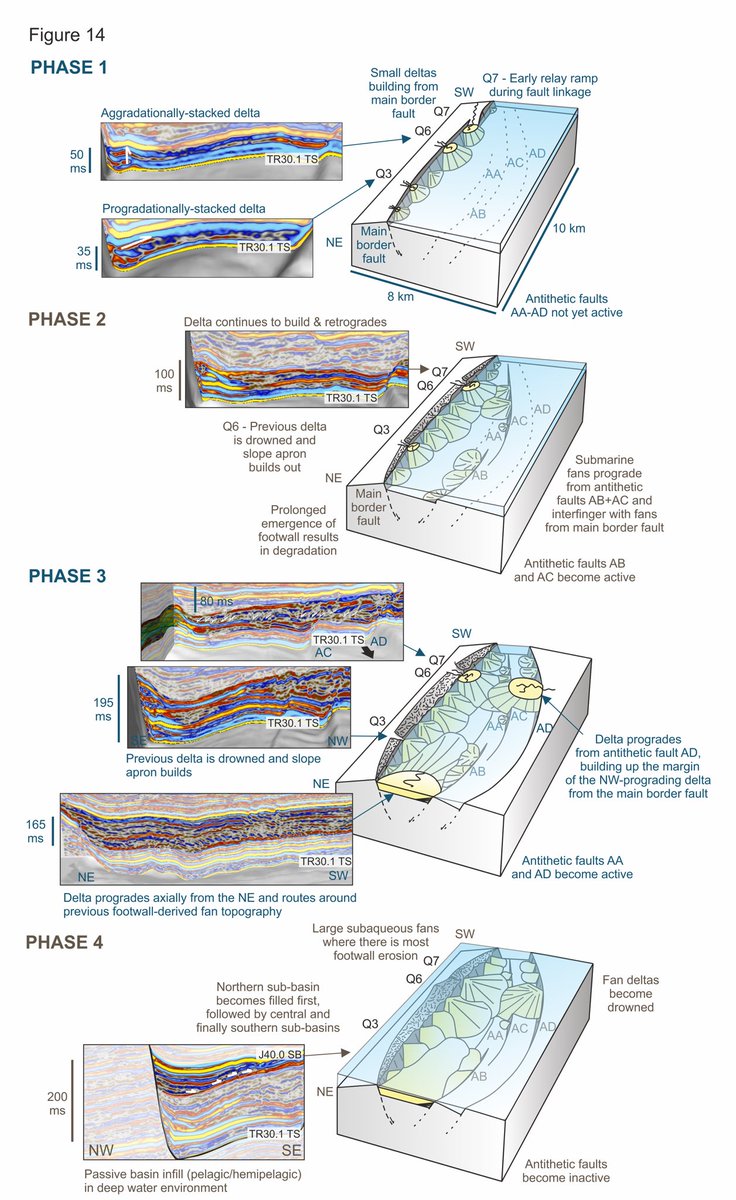 https://abs.twimg.com/emoji/v2/... draggable="false" alt="📸" title="Kamera mit Blitz" aria-label="Emoji: Kamera mit Blitz">" title="We make a quantitatively-informed interpretation of the tectono-sedimentary evolution of the basin https://abs.twimg.com/emoji/v2/... draggable="false" alt="🤓" title="Nerd-Gesicht" aria-label="Emoji: Nerd-Gesicht">https://abs.twimg.com/emoji/v2/... draggable="false" alt="📸" title="Kamera mit Blitz" aria-label="Emoji: Kamera mit Blitz">" class="img-responsive" style="max-width:100%;"/>
https://abs.twimg.com/emoji/v2/... draggable="false" alt="📸" title="Kamera mit Blitz" aria-label="Emoji: Kamera mit Blitz">" title="We make a quantitatively-informed interpretation of the tectono-sedimentary evolution of the basin https://abs.twimg.com/emoji/v2/... draggable="false" alt="🤓" title="Nerd-Gesicht" aria-label="Emoji: Nerd-Gesicht">https://abs.twimg.com/emoji/v2/... draggable="false" alt="📸" title="Kamera mit Blitz" aria-label="Emoji: Kamera mit Blitz">" class="img-responsive" style="max-width:100%;"/>


